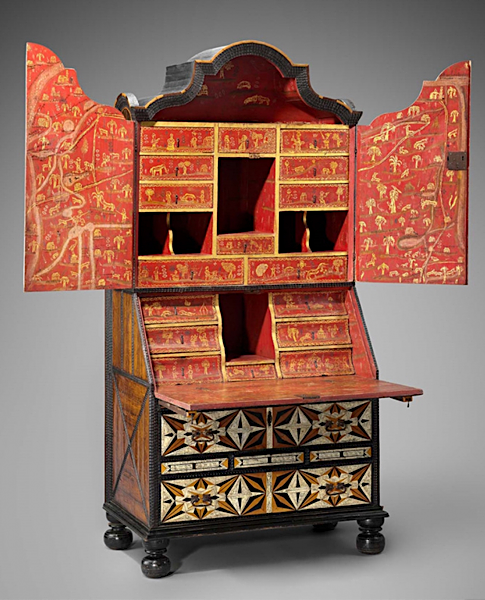Undergraduate Seminar: Beyond Silk and Silver: The Art of Trade in New Spain

Image: Desk and Bookcase, Puebla, Mexico, Mid 18th century. Inlaid woods and incised and painted bone, maque, gold and polychrome paint, metal hardware. Ann and Gordon Getty Collection.
From 1565 until 1815, Spanish trading vessels known as "China ships" traversed the Pacific between the ports of Acapulco, on the Western coast of New Spain (present-day Mexico), and Manila, the capital of the Spanish Viceroyalty in the Philippines. Each of these massive ships connected a wide range of materials, goods, and objects of both Asian and Latin American origin to new audiences of consumers on either side of the Pacific.
In this seminar, students will examine the broad array of material culture related to early modern trans-Pacific trade—from the ships that made the perilous journey and the objects they carried, to the visual representations of the trade itself. Discussion will address a variety of issues, including the translation and legibility of iconography across culture, the significance of style and materiality as they relate to geographic provenance, as well as how notions of value were applied to concepts like originality, copy, counterfeit, and mass production. A selection of visual and textual primary sources and weekly reading assignments will help to situate the desire for Asian goods within global patterns of consumption, as well as to understand the impact of imports on the production of art objects in what are now Mexico, Peru, and the Philippines, with some consideration of production in Japan and China. In addition, some class time will be devoted to a discussion of the challenges that Pacific trade places on traditional conventions of art historical teaching and museum display.
Students will be evaluated on their familiarity with assigned readings through participation in weekly seminar discussions and four written responses, a short quiz, and a final paper.
Estimated cost of materials: $0-$50.
HISTART concentration distributions: 3. Early Modern, E. Latin America and the Caribbean